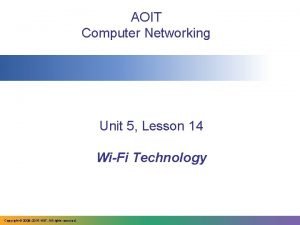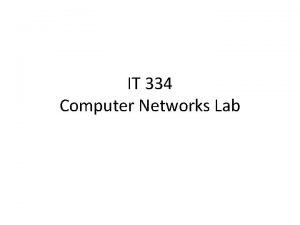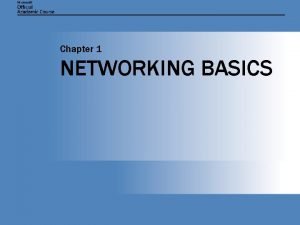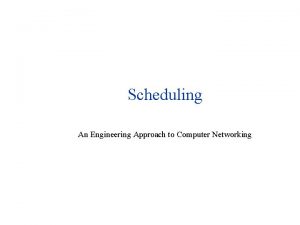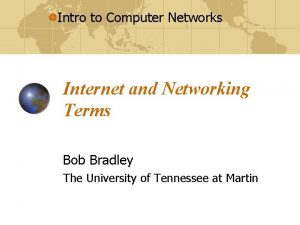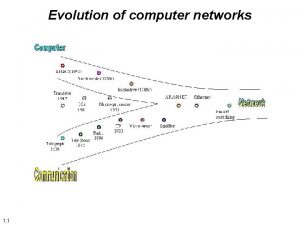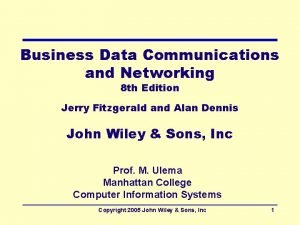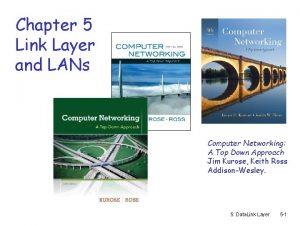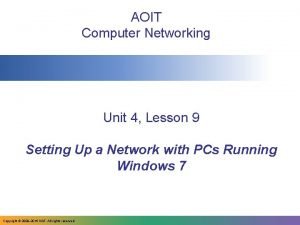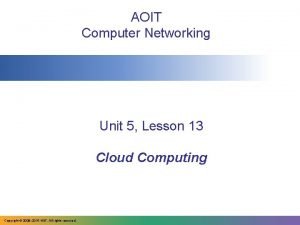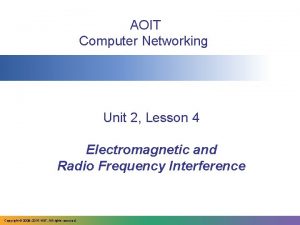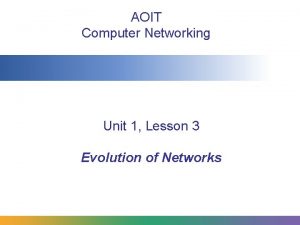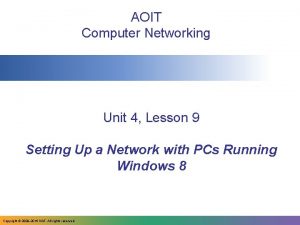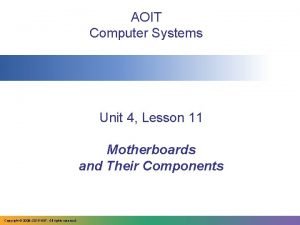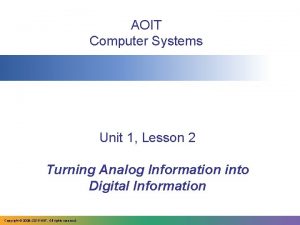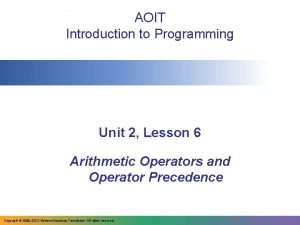AOIT Computer Networking Unit 3 Lesson 6 Types














- Slides: 14

AOIT Computer Networking Unit 3, Lesson 6 Types of Network Topologies Copyright © 2008– 2016 NAF. All rights reserved.

A network topology describes how computers are arranged on a network When you look at how computers, or nodes, are arranged and connected to each other on a network, what picture do you see? • Star • Ring • Bus • Mesh • Some combination The topology, or how the computers are arranged physically, affects the efficiency and cost of the network.

A star topology connects using a hub or a switch

A token ring network uses an MAU hub

A bus topology has a central cable

A full mesh topology provides complete linking Full mesh topology links every computer or device to every other one.

A partial mesh topology provides many routes In a partial mesh topology, all computers can connect to all others by going through no more than a few nodes.

Often networks combine topologies Accounting Sales

Networks can be classified by distance Local Area Network (LAN) • In one or more buildings • Home or business Metropolitan Area Network (MAN) • Multiple locations • One city or region • Business, schools in a district, or local government Wide Area Network(WAN) • Covers a large area • International business • The Internet

On peer-to-peer networks, all computers are equal

In client/server networks, shared resources are accessed from a server Networks often have servers that perform a specific function: • File server • Web server • Email server A client/server network in a small office might look like this.

Modern data storage facilities have server farms Internet businesses like Google use huge server farms to store data. Server farms house dozens, hundreds, even thousands of servers in specially cooled racks. A rack of server modules that are part of a Google server farm.

Server farms perform load balancing • Load balancing determines which server should be used next for each incoming request • Failed server modules are quickly pulled and replaced in the rack. Each server contains a backup battery.

Building a network requires planning each aspect of how the computers connect and communicate • Network topologies describe how computers are connected to each other. • Networks are classified into LAN, MAN, and WAN by the distance they cover. • On a peer-to-peer network, all computers on the network are equal. • In a client/server network, a server controls the access other computers (the clients) have to resources.
 Three dumb routers
Three dumb routers Aoit apex high school
Aoit apex high school Apex aoit
Apex aoit 14 aoit
14 aoit 14 aoit
14 aoit Jacobson/karels algorithm
Jacobson/karels algorithm How to calculate subnet mask from ip address
How to calculate subnet mask from ip address Computer networking 101
Computer networking 101 An engineering approach to computer networking
An engineering approach to computer networking Computer networking terms
Computer networking terms Computer networking
Computer networking Computer networking 8th edition
Computer networking 8th edition Analogue and digital transmission in computer networks
Analogue and digital transmission in computer networks Kurose
Kurose Computer networking
Computer networking




